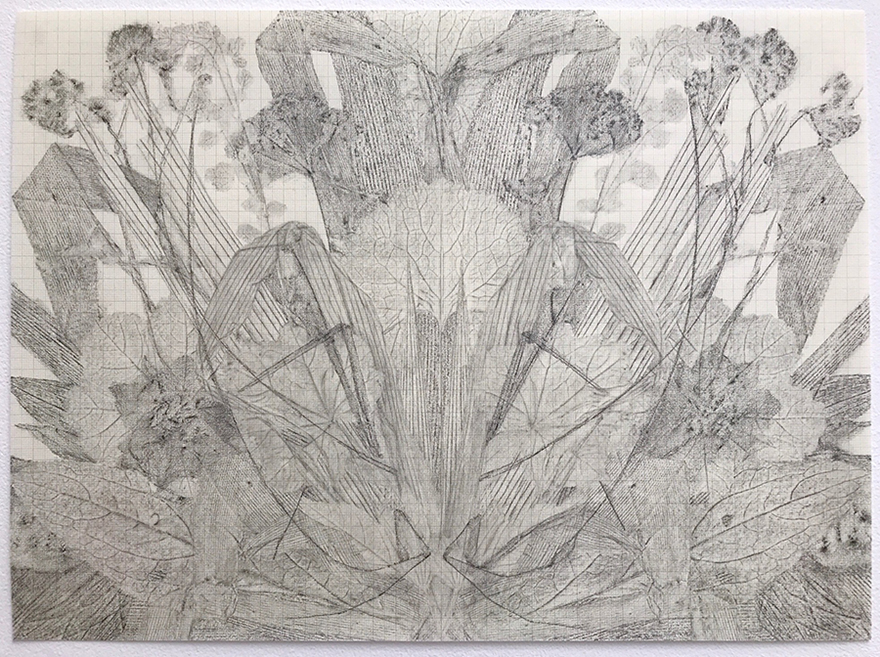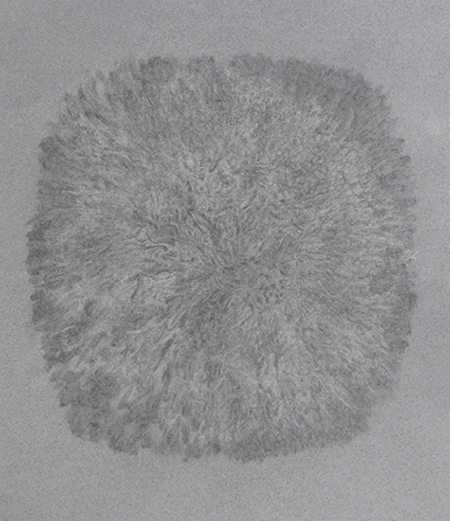Re-Natured, a body of work begun in 2019 with a set of five graphite powder drawings titled Flower Types, continues an exploration fundamental to much of my work, of the ambiguous nature of objects. In the Re-Natured works which followed this first piece, the relationship between the original physical object and the images drawn from it via frottage became the methodological focus as, once more, the alignment between subject and method was a conceptual concern.
As in other series and pieces (Model Series, 2011-2014 and Evidence of Doubt, 2011 - 2013) the 'object' is a cypher through which meaning is translated via methods of image-making. What emerges aims to suggest new potential questions about value, substance, truth or presence. In Re-Natured, different formal presentations (including diptychs, composites and single pieces) offer structures and arrangements (natural and invented), repetitions (random or rhythmical) and duplications, as vehicles for re-presentation of the objects via which we can consider them anew.
The objects used in Re-Natured are common weeds, dead blooms, fallen leaves: the usually discarded or overlooked (yet ubiquitous) organic matter found in the everyday world. Each specimen represents both the particular and the universal, their singularity of structure and detail often getting lost in their classification as so much debris. They are cut, blown or heaped at random, of no intrinsic worth. As weeds, they represent all that we try to expunge from the world - the 'ugly', the out of control, creeping into every available crevice when our vigilance falters. As dead blooms they represent (throughout the traditions of Still Life and in our gardens and living spaces) a Memento Mori, a reminder of our own fragility, our loss of beauty. All seem to exist on the margins of life: present but to be ignored.
 Copyright
notice Copyright
notice
|


